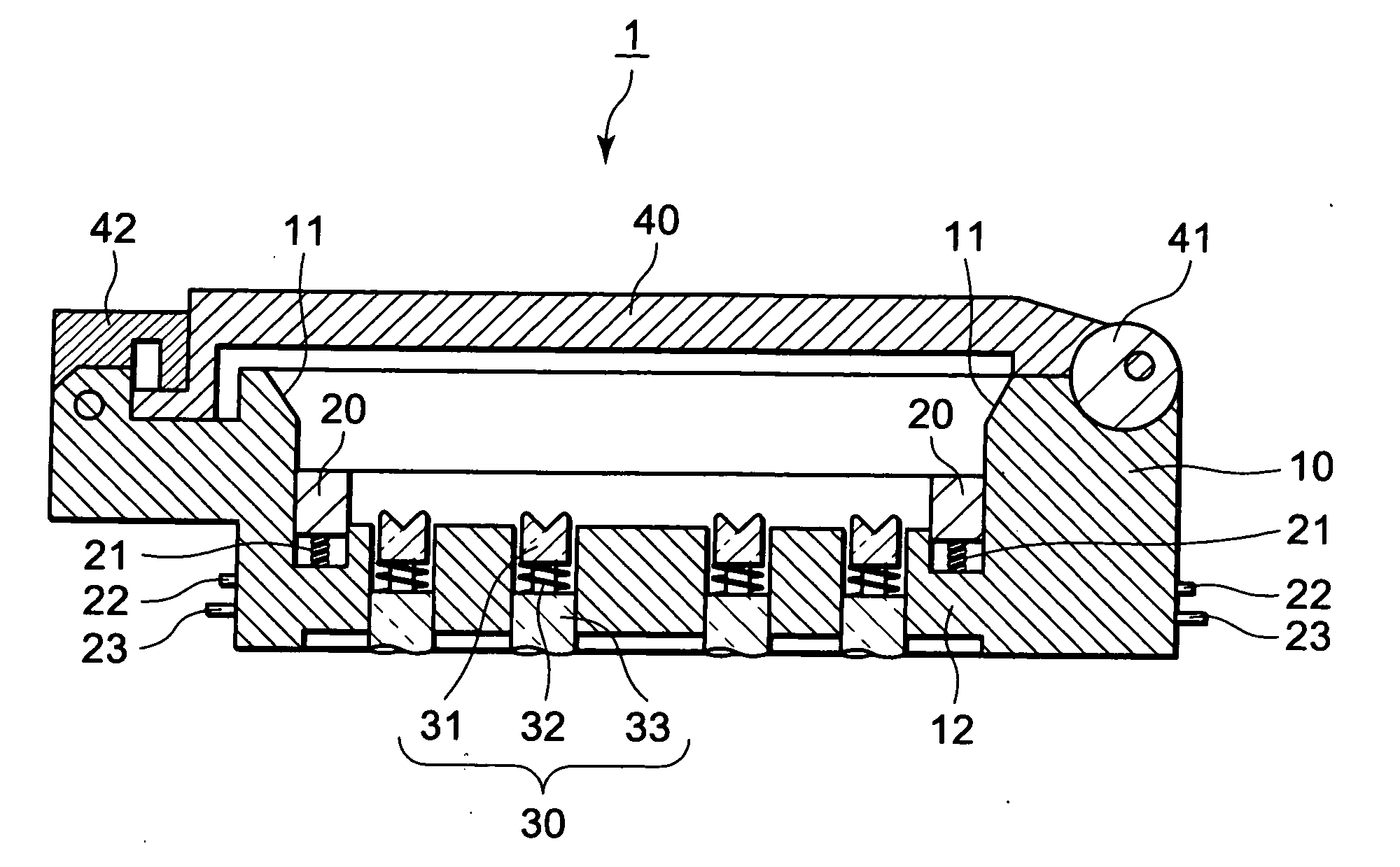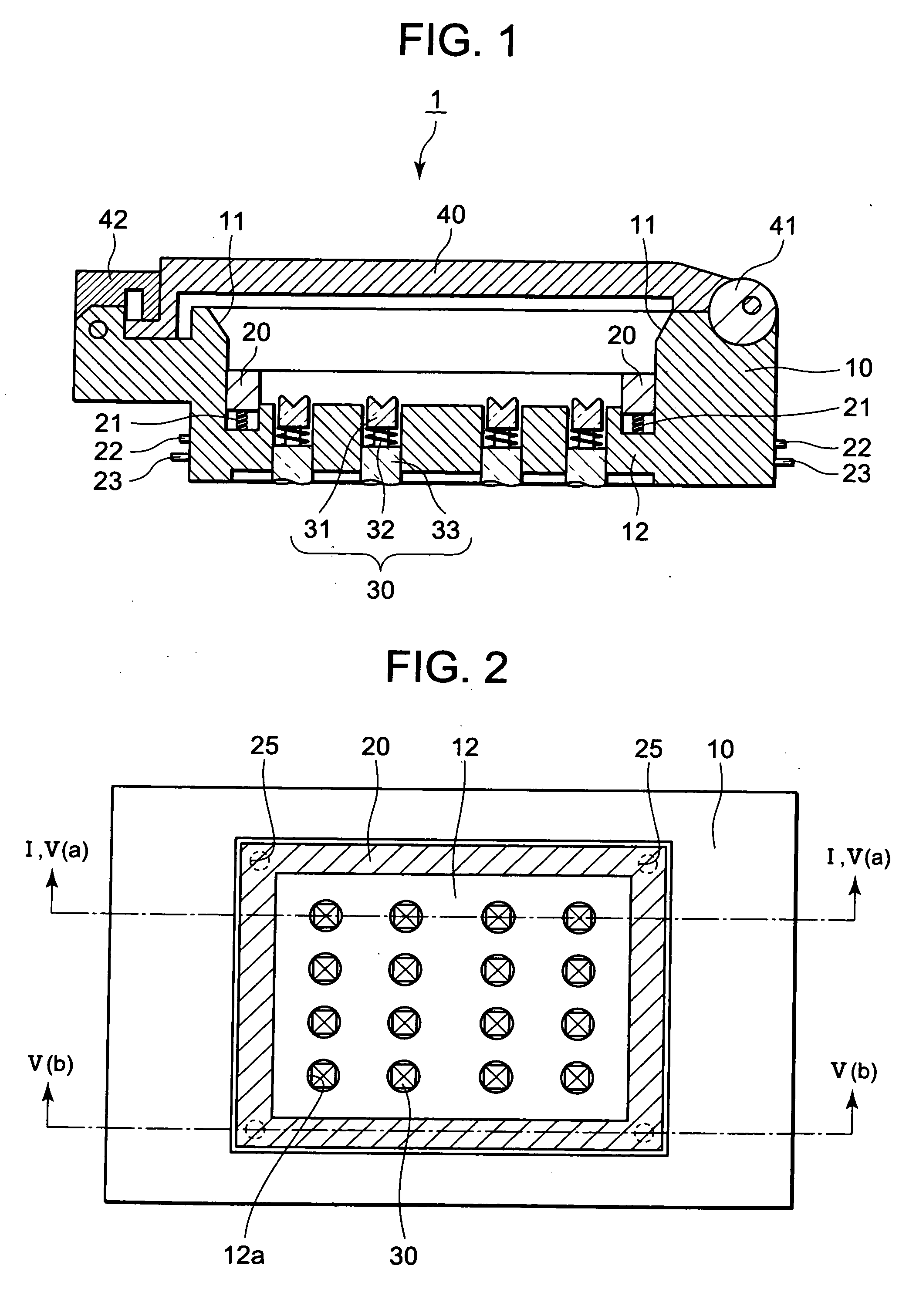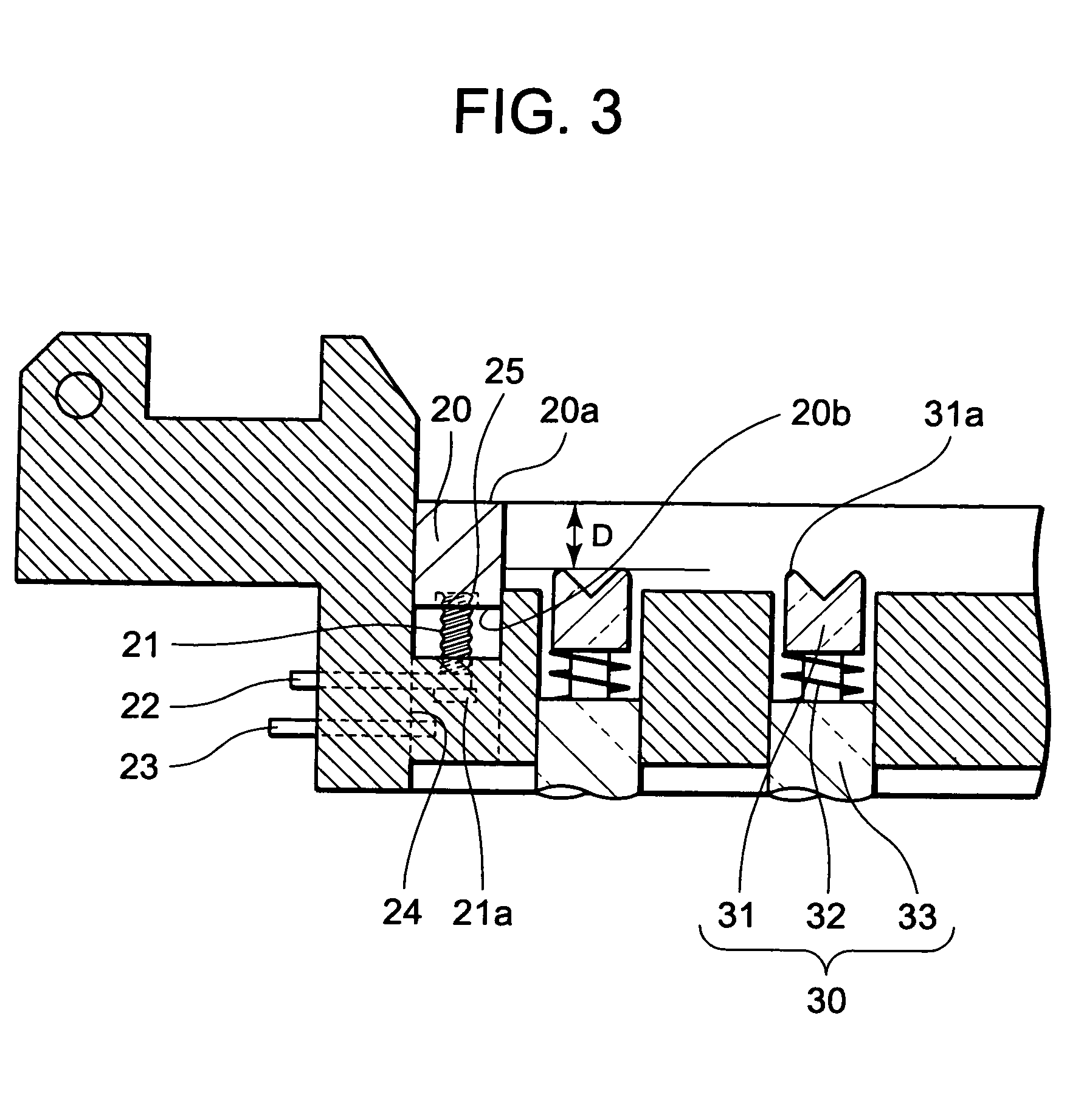Socket for semiconductor device
- Summary
- Abstract
- Description
- Claims
- Application Information
AI Technical Summary
Benefits of technology
Problems solved by technology
Method used
Image
Examples
first embodiment
[0036]FIG. 1 is a sectional view explaining an example of a semiconductor socket (hereafter “IC socket”) 1 according to a first embodiment. FIG. 2 is a schematic plan view of the main components of an IC socket 1 according to the first embodiment. The cutaway cross sectional face I-I in FIG. 2 corresponds to FIG. 1. In the sectional views hereafter, screws and springs which are originally shown in cross sectional view, are not shown as sectional views for the sake of convenience of description.
[0037]The IC socket 1 is adapted to electrically connect the electrode terminal of the IC package and the circuit board of the IC testing device in order to test the characteristics of the semiconductor device (hereafter “IC package”). The IC socket 1 as shown in the same figure is provided with a socket main body 10, an IC mount (sheeting section) 20, a contact pin 30 and a lid 40 functioning as a base.
[0038]The socket main body 10 is formed from an insulating material and functions as a hous...
second embodiment
[0082]Next an example of an IC socket which is different from the first embodiment will be described. In the following description, those components which are the same as those described with reference to the embodiment above are denoted by the same reference numbers and additional description will be omitted.
[0083]An IC packet according to the second embodiment has the same structure as the first embodiment with the exception of the following points. That is to say, the IC mount 20 according to the first embodiment was frame-shaped. However the mount according to the second embodiment is formed as a plate-shaped body provided with an array of through holes positioned corresponding to the contact pins 30.
[0084]FIG. 7 shows a schematic plan view of the main components of an IC socket 2 according to a second embodiment. FIG. 8A is a cross sectional view along the line VIII(a)-VIII(a) in FIG. 7 and FIG. 8B is a cross sectional view along the line VIII(b)-VIII(b) in FIG. 7.
[0085]As show...
PUM
 Login to View More
Login to View More Abstract
Description
Claims
Application Information
 Login to View More
Login to View More - R&D
- Intellectual Property
- Life Sciences
- Materials
- Tech Scout
- Unparalleled Data Quality
- Higher Quality Content
- 60% Fewer Hallucinations
Browse by: Latest US Patents, China's latest patents, Technical Efficacy Thesaurus, Application Domain, Technology Topic, Popular Technical Reports.
© 2025 PatSnap. All rights reserved.Legal|Privacy policy|Modern Slavery Act Transparency Statement|Sitemap|About US| Contact US: help@patsnap.com



